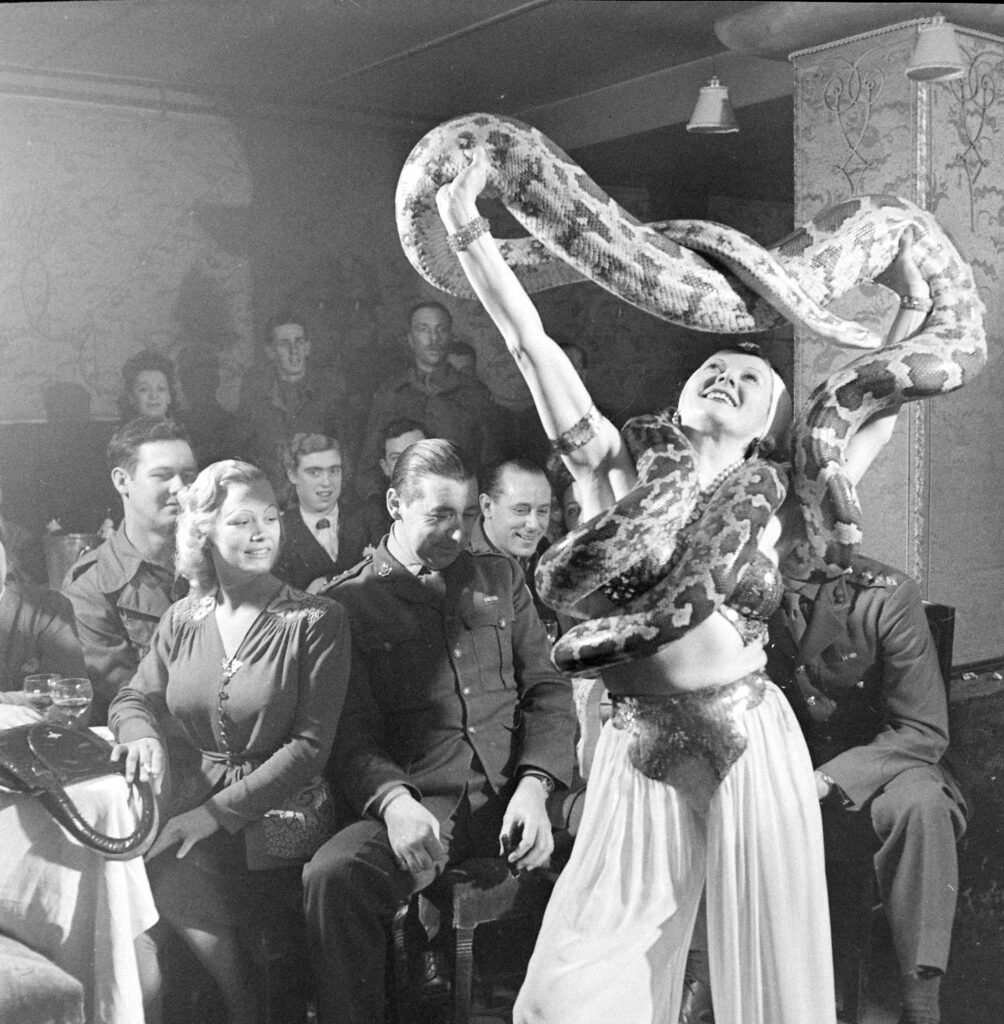When Betty Grable was profiled in the June 7, 1943, issue of LIFE, she shared headline status with another entity: her own legs, which the magazine dubbed a “major Hollywood landmark.” The previous February, an impression of her leg had been immortalized in the cement in front of Grauman’s Chinese Theater, and the limbs were reportedly insured for $1 million at one point.
In fact, the published photo essay was nearly all legs. The face of the actress was seen in only one of the 14 pictures that accompany the story. Here, Grable’s face has been restored to several of them.
And, while Grable clearly knew that her legs had helped make her famous, the LIFE profile hints that even in 1943 the reduction of a woman to one body part—and not her brain—could rub the wrong way. As the magazine reported, her first jobs in Hollywood had involved merely posing for publicity stills or standing in as a leggy extra. Her breakthrough into starring roles was delayed by her studio’s focus on her lower-half looks. And she maintained a humorously pragmatic attitude about the whole thing.
“They are fine for pushing the foot pedals in my car,” Grable told LIFE.

Original caption: “The legs at work on the set. They are clad in this costume in Betty’s latest screen appearance, Coney Island, a picture which dwells on them at considerable length.”
Walter Sanders The LIFE Picture Collection/Shutterstock

Original caption: “The legs relaxing. Betty is athletic, but she does not have to take special exercises or massages to keep her figure shapely.”
Walter Sanders The LIFE Picture Collection/Shutterstock

Betty Grable, 1943.
Walter Sanders The LIFE Picture Collection/Shutterstock

Betty Grable getting cold cream applied to her legs by LIFE photographer Walter Sanders as he prepares her for a photo session at studio.
Walter Sanders The LIFE Picture Collection/Shutterstock

Original caption: “Betty poses the legs for a still shot on a studio beach set. She has made more such leg art stills than any other actress.”
Walter Sanders The LIFE Picture Collection/Shutterstock

Original caption: “Going to studio in the morning, Betty steps into roadster. Once asked to comment on her hips, well displayed here, she said, `They’re just where my legs hook on.'” “
Walter Sanders The LIFE Picture Collection/Shutterstock

Betty Grable, in her dressing room at 20th Century-Fox studios, pulled on black mesh stockings for a scene that would feature her famous legs, 1943.
Walter Sanders The LIFE Picture Collection/Shutterstock

Betty Grable, 1943.
Walter Sanders The LIFE Picture Collection/Shutterstock

Original caption: “In the course of a day Betty’s legs walk, climb stairs, dance and are generally flexed like other legs. Here the legs are shown as she prepares morning shower at home.”
Walter Sanders The LIFE Picture Collection/Shutterstock

Impression of Betty’s leg made in court of Grauman’s Chinese Theater. “Thanks Sid” is addressed to Mr. Grauman.
Walter Sanders The LIFE Picture Collection/Shutterstock

Betty Grable’s Legs
Walter Sanders The LIFE Picture Collection/Shutterstock



















































































